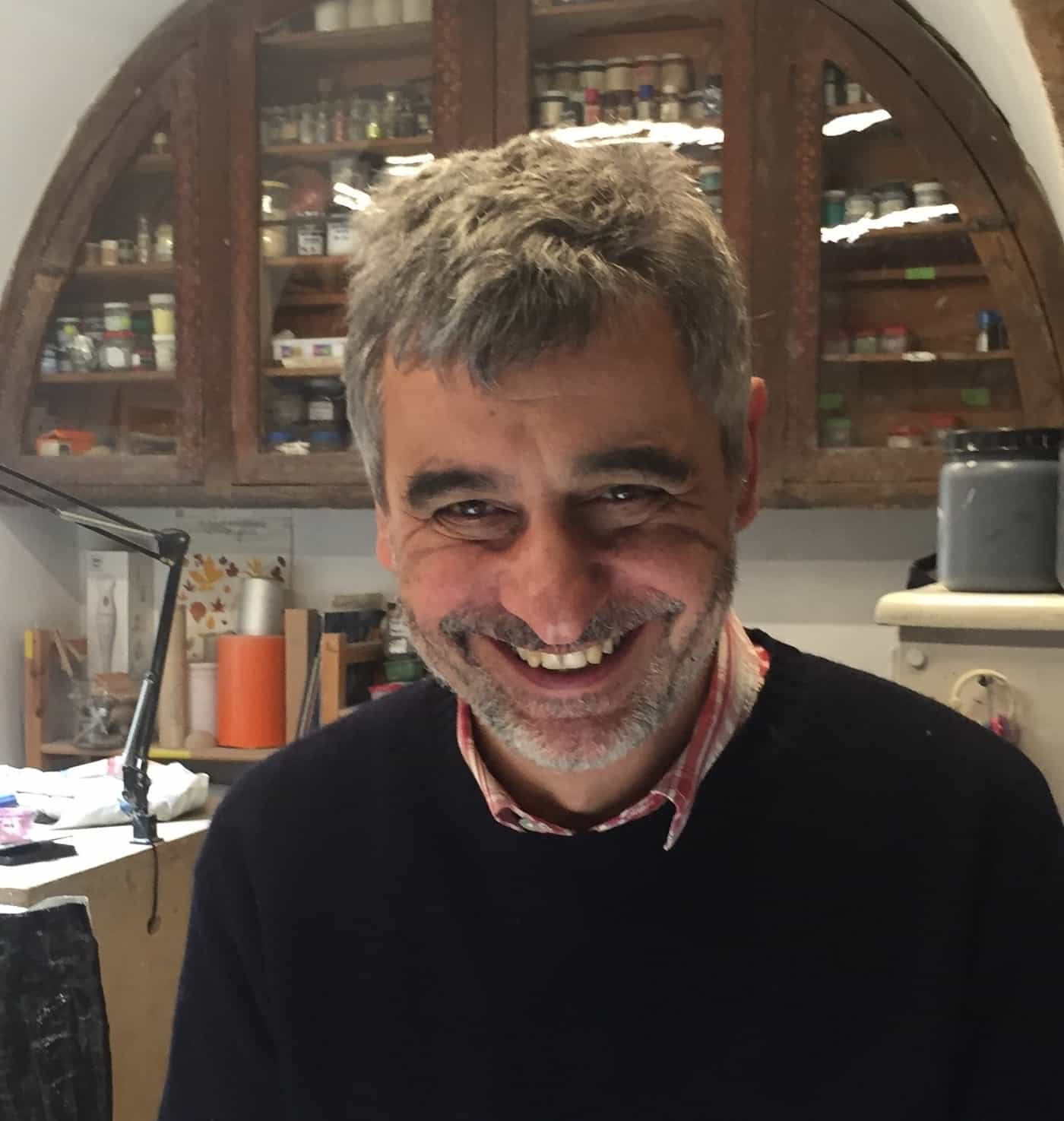Emanuele Scoppola
Biography

Emanuele Scoppola, born 1965 in Rome, Italy, teaches ceramics at the honorable Antica Scuola di Arte Educatrive Museum in Rome since 2015.
Scoppola started his artistic career 1993 by painting under the lead of American artist Toni Lucchesi. Scoppola began studying ceramics and sculpture when joining the Antica Scuola di Arte Educatrive Museum in 2005 and has thereafter focused on this medium, working under the signature ‘Lalli’.
Scoppola has exhibited his artwork in a vast number of Italian galleries and exhibitions, and his ceramic work is represented at among others iQ hotel and Dopodomani suites and apartments in Rome, Italy, and at Gelatolove in Carlsbad, USA.
Scoppola also holds a PhD in comparative literature from Sapienza Università di Roma and has studied literature at the University of Washington in Seattle, USA.
What first attracted Scoppola to ceramics is the possibility of making closed forms and working with the internal pressure of air before opening the forms up again, a sort of Pneumatic shaping – a technique Scoppola often uses when creating many of his imaginative and playful fish sculptures.
Other techniques Scoppola uses for his modeling is pottery wheel and clay extruder, as well as – for some of his sculptures – the first steps of the Pneumatic shaping process where the the sculpture is formed with long coils of clay but after this the internal air pressure is not processed in the same way as in Pneumatic shaping.
The inspiration behind Scoppola’s eclectic compositions goes back to the sculptor’s earliest childhood:
“In the late 60’s, when I first met fish, their physiology was too complex for my understanding. I thought their bodies were air tanks.
Decades later, I discovered the pleasure of modelling clay shapes using the resistance of the internal air and playing with the pressure of it during the shrinking phase.”
In some of his sculpture, Scoppola has taken the clay-air interaction to yet another level by working them into one or multiple toned ocarinas, giving the artwork an elevated charismatic feature:
“All the ocarinas are an hommage to the air that I use for the pneumatic shaping, to give her a voice. I like making fish shaped ocarinas because fish are silent animals. We have the idiomatic expression “muto come un pesce”, silent as a fish. So there is something paradoxical in a fish shaped source of sound, and something tender in kissing a fish.”
Scoppola’s choice for clay varies and he uses different types of clay, mixing them to create the material which meets his requirements. The principal types are two traditional Tuscany clays; Montelupo and Sansepolcro – also known as Maiolica, a clay used for low temperature fires at around 980°C.
Lindberg-on-Sea Art Gallery is delighted and proud to announce exclusive representation of Emanuele Scoppola’s amazing ceramic artwork to the Scandinavian market.
Artwork
-
Blauluft SOLD
-
Kopparluft SOLD
-
Dluft SOLD
-
Svartfisk SOLD
-
Jonisk Majolica 1 SOLD
-
Jonisk Majolica 2 SOLD
-
Jonisk Majolica 3 SOLD
-
Summer Holiday Spare Whale SOLD
-
Stenfisk SOLD
-
Weekend Spare Whale SOLD
-
Rodfisk SOLD
-
Guldfisk SOLD
-
Gulfisk SOLD
-
Rodaogonfisk SOLD
-
Skallerfisk SOLD
-
Turkosfisk SOLD
-
Arafisk SOLD
-
Luftfisk SOLD
-
Bluft SOLD
-
Filosofisk SOLD
-
Svarvfisk SOLD
-
Forstfisk SOLD
-
School of Five SOLD
